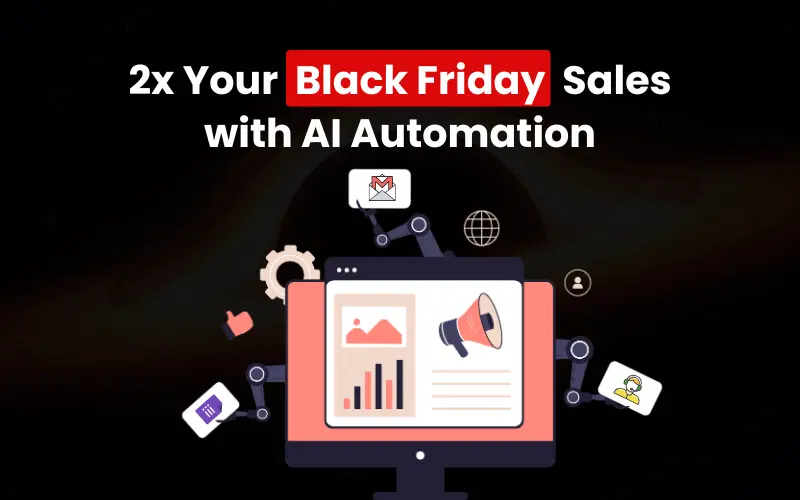These days, the e-commerce game is fiercely competitive, and using marketing automation paired with AI can really give your brand an edge. If you're a CTO checking out platforms, a product manager weighing options, or part of an agency exploring white-label solutions, learning how to set up AI-driven marketing automation is a must.
This guide takes you through the steps needed to integrate AI marketing automation into your e-commerce brand effortlessly. We dive into key ideas, real-life cases, and handy tips to help you get started the right way.
Understanding Marketing Automation and AI in E-Commerce
What Is Marketing Automation and AI?
Marketing automation is all about using software to automatically handle repetitive tasks, like sending emails, segmenting customers, and organizing campaigns. AI takes this up a notch by allowing smarter decision-making based on data insights and customer behavior.
By combining these, you can streamline your marketing processes and scale up customer experiences effectively.
Why Use AI for E-Commerce Marketing?
AI makes marketing automation more powerful by:
- Personalizing Content: AI customizes messages, product tips, and offers based on what individuals like.
- Optimizing Timing: AI figures out the best times to send emails or notifications.
- Segmenting Audiences: Automatically creates audience segments using behavioral data, requiring no manual input.
- Predicting Customer Actions: AI can predict how likely someone is to buy, leave, or what they're interested in, allowing for proactive actions.
Top e-commerce brands are leaning more on AI for e-commerce to keep up and meet customer expectations.
Step 1: Define Your Marketing Automation Goals
Identify What You Want to Automate
Start by pinpointing marketing tasks you want to automate. Typical ones are:
- Ecommerce email automation: Such as welcome emails and reminders for abandoned carts.
- Product recommendation engine: Recommend related products when customers browse or check out.
- AI customer engagement: Like chatbots offering instant help and personalized offers.
Make sure each goal ties back to important outcomes like boosting sales or enhancing customer loyalty.
Set Clear KPIs
Create measurable KPIs such as open rates or revenue from emails to measure success.
Step 2: Choose the Right Platform for AI Marketing Automation
Evaluate Platform Features
When you're reviewing platforms, ensure they support both marketing automation and AI robustly. Essential features include:
- Advanced segmentation and targeting options
- AI-driven recommendation engines
- Real-time behavior tracking
- E-commerce system and CRM integration
- Support for email automation workflows
Consider Data Security and Compliance
Data privacy is vital. Your chosen platform should comply with regulations like GDPR and CCPA, offering secure data handling and transparency.
Platforms with clear audit trails and user controls build trust and manage risks effectively.
Look for Scalable, Flexible Solutions
Your needs might grow, so pick platforms that accommodate larger data volumes and offer customizable AI features.
Step 3: Collect and Prepare Your Customer Data
Data Quality Matters
Trustworthy AI insights come from quality data. Bring together data from:
- Website behavior
- Buying histories
- Customer profiles
- Email interactions
Remove duplicates to ensure your algorithms are accurate.
Ensure Transparency and Permissions
Make sure you have customer consent and provide easy opt-out options to foster trust.
Step 4: Build AI-Powered Ecommerce Email Automation
Design Automated Email Workflows
Common workflows to automate with AI include:
- Welcome Series: Greet newcomers with personalized messages.
- Cart Abandonment: Reminder emails for items left behind with special incentives.
- Post-Purchase Follow-Up: Request reviews and suggest related items.
- Re-Engagement Campaigns: Revive inactive subscribers with tailored offers.
Use AI to Personalize Email Content
Leverage AI to automatically craft personalized subject lines, product suggestions, and calls to action, boosting open rates and conversions.
Step 5: Implement an AI Product Recommendation Engine
How Product Recommendation Engines Work
Recommendation engines utilize AI to analyze data and suggest likely buys. Techniques include:
- Collaborative Filtering: Suggest what similar customers liked.
- Content-Based Filtering: Recommend items similar to your current choice.
- Hybrid Approaches: Combine several methods for precision.
Integrate Recommendations Across Channels
Place AI recommendations on:
- Product pages
- Shopping carts
- Email campaigns
- Homepage and search results
This helps in upselling and cross-selling across your channels.
Step 6: Enhance AI Customer Engagement
Deploy AI Chatbots and Virtual Assistants
AI chatbots can answer questions, help with product choices, and handle common problems lightning-fast, improving satisfaction.
Leverage Predictive Analytics for Proactive Outreach
AI can assess past behavior to foresee customer needs, such as identifying VIPs for special deals or those at risk of leaving for timely interventions.
Real-World Use Cases and Examples
Case Study: Fashion Retailer Boosts Sales with AI Email Automation
Facing a slump, a mid-sized fashion brand turned to AI-driven emails and saw a 30% revenue spike in six months by personalizing abandoned cart emails and recommendations.
Use Case: Electronics Brand Improves Engagement with AI Chatbots
An electronics retailer saw a 40% drop in support tickets and a 15% bump in sales by rolling out AI chatbots for customer queries.
Best Practices for Success
Continuously Test and Optimize
Regularly evaluate AI insights and campaign results. Experiment with different AI models and designs for the best results.
Maintain Data Privacy and Transparency
Be open with customers about data usage. Ensure AI maintains privacy and builds user trust.
Train Your Team
Keep your marketing, product, and tech teams clued in on AI marketing tools to optimize their use.
Conclusion and Next Steps
AI and marketing automation open doors for e-commerce brands to grow and efficiently attract customers. By setting smart goals, selecting the right tools, prepping your data, and creating AI-driven campaigns, you’ll boost both customer experiences and sales.
Begin small, measure your success, and expand AI marketing efforts thoughtfully. Need help? Our team offers expert advice tailored specifically to your brand and goals.
Taking these steps will set your e-commerce business on the path to thriving in an AI-powered world.






